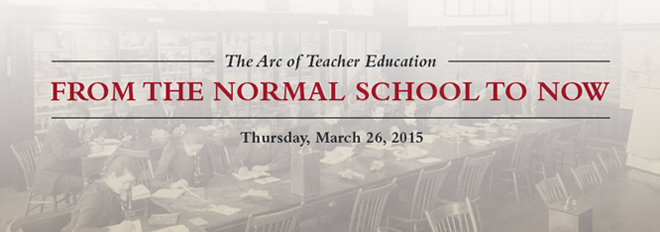Presentation Title
Canadian Students and Transnational Experiences of Education at Bridgewater Normal School, 1840-1932
Session Name
Concurrent Session 2. Exporting the Normal School Model
Start Date
26-3-2015 2:00 PM
End Date
26-3-2015 3:30 PM
Abstract
n May 1894, Bridgewater Normal School student, Nova Scotian and Acadia College graduate Frederick Monod Shaw opened a heated debate with his countrymen by publishing a letter in his alma mater’s alumni journal, The Acadia Athenaeum, which at once praised the methods of learning at his new, American school and found the approaches of his old, Canadian one wanting. At the centre of pedagogy at BNS was object study, Shaw declared, a hands-on practical method in all branches of learning that eclipsed Acadia professors’ preferences for the theoretical: “high literary culture, higher philosophy, and beautiful thoughts.” Shaw’s bold declarations were hardly well received among his colleagues in Nova Scotia, and the lengthy ensuing debate had no decisive winner. But the debate is important in that it shines light on the consequences of the presence of Canadians such as Shaw at Bridgewater and other American normal schools during their late nineteenth-century heyday. Even in its earliest decades, Bridgewater Normal had international students whose goals and “takeaways” from their experiences there have yet to be fully examined. Only ever a small fraction of the student population (the BNS Alumni Record of 1900 claims that 44 of the school’s 4,758 alumni were from abroad), foreign students came from a variety of origins: Mexico, England, Burma, Jamaica, Japan, Armenia. The vast majority of that group, however, came from Canada, and most of them from the province of Nova Scotia.
This paper traces demographic details of Bridgewater’s Canadian contingent, and offer some analysis of their motivations for choosing BNS over the developed provincial normal schools (in Truro, NS and Saint John, NB) closer to their homes. Finally, it looks at the transnational conversation that Canadians and Americans were carrying on about the most progressive methods of teacher preparation, a conversation energized by the voices of international students such as Shaw.
Canadian Students and Transnational Experiences of Education at Bridgewater Normal School, 1840-1932
n May 1894, Bridgewater Normal School student, Nova Scotian and Acadia College graduate Frederick Monod Shaw opened a heated debate with his countrymen by publishing a letter in his alma mater’s alumni journal, The Acadia Athenaeum, which at once praised the methods of learning at his new, American school and found the approaches of his old, Canadian one wanting. At the centre of pedagogy at BNS was object study, Shaw declared, a hands-on practical method in all branches of learning that eclipsed Acadia professors’ preferences for the theoretical: “high literary culture, higher philosophy, and beautiful thoughts.” Shaw’s bold declarations were hardly well received among his colleagues in Nova Scotia, and the lengthy ensuing debate had no decisive winner. But the debate is important in that it shines light on the consequences of the presence of Canadians such as Shaw at Bridgewater and other American normal schools during their late nineteenth-century heyday. Even in its earliest decades, Bridgewater Normal had international students whose goals and “takeaways” from their experiences there have yet to be fully examined. Only ever a small fraction of the student population (the BNS Alumni Record of 1900 claims that 44 of the school’s 4,758 alumni were from abroad), foreign students came from a variety of origins: Mexico, England, Burma, Jamaica, Japan, Armenia. The vast majority of that group, however, came from Canada, and most of them from the province of Nova Scotia.
This paper traces demographic details of Bridgewater’s Canadian contingent, and offer some analysis of their motivations for choosing BNS over the developed provincial normal schools (in Truro, NS and Saint John, NB) closer to their homes. Finally, it looks at the transnational conversation that Canadians and Americans were carrying on about the most progressive methods of teacher preparation, a conversation energized by the voices of international students such as Shaw.
